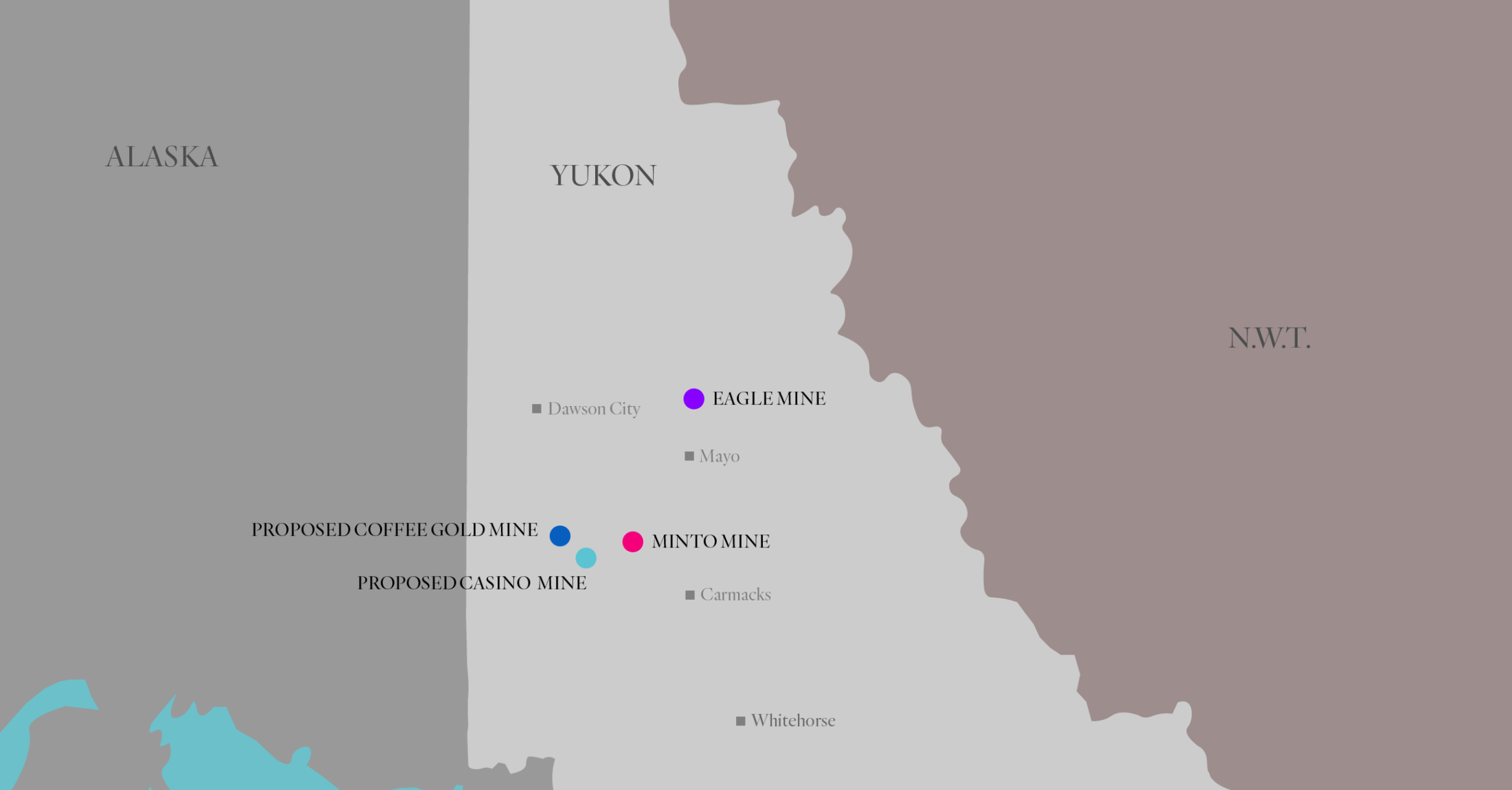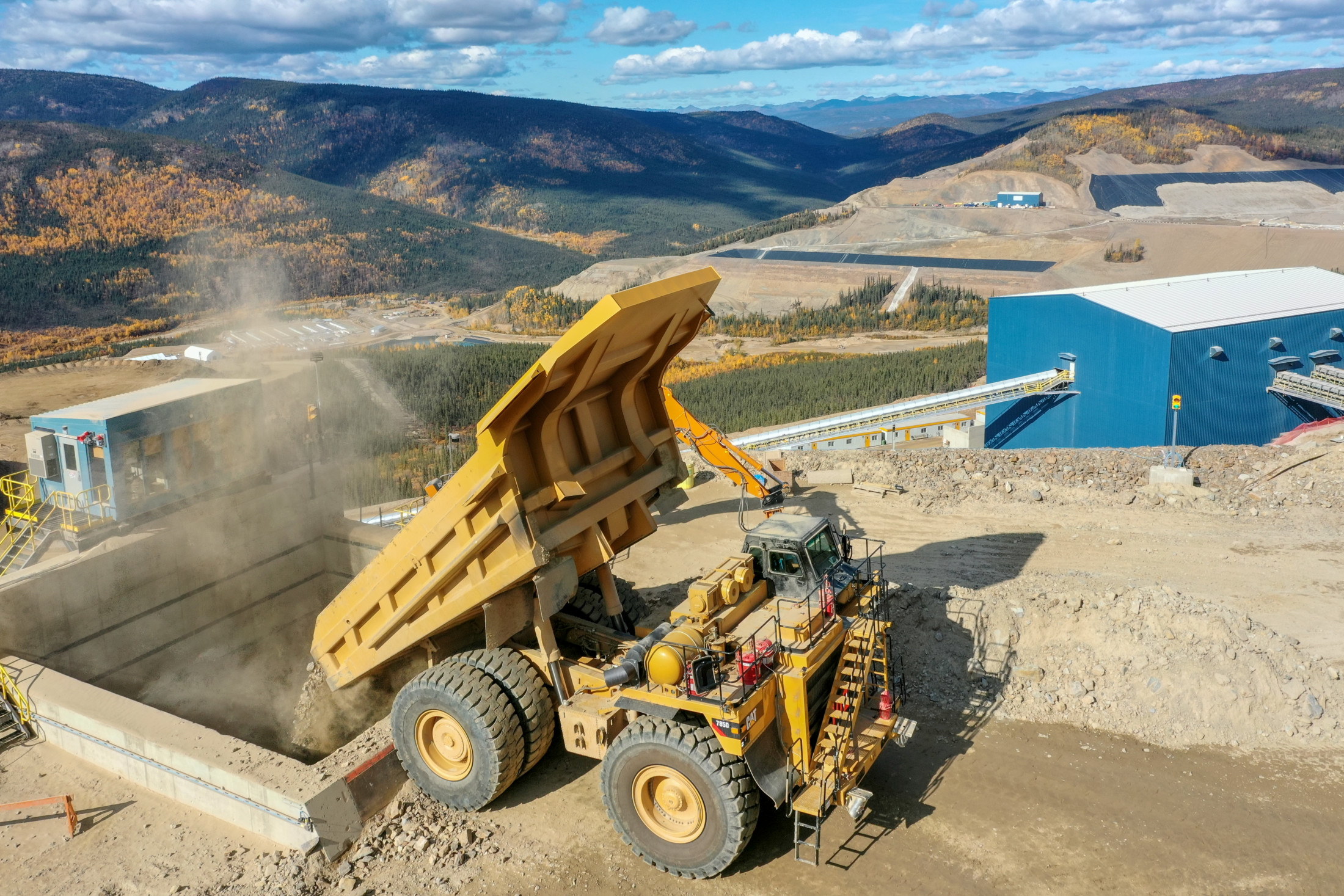
Water determines the Great Lakes Region’s economic future
Climate change, geopolitics and business opportunities power a blue economy
During a span of nine days in April, a Yukon mine dumped thousands of cubic metres of untreated wastewater into a gravel-lined sump that filters into groundwater and could leach into a nearby creek, according to a company report.
Victoria Gold’s Eagle Gold Mine north of Mayo — the largest gold mine in Yukon history — discharged roughly 43 million litres (about 17 Olympic-sized swimming pools) of contaminated water, as a result of increased runoff from snowmelt threatening to overflow one of the ponds used to collect mine wastewater, according to the report.
The discharged water hadn’t been used as part of gold processing, but could have come into contact with the open-pit mine’s infrastructure, such as roads and waste dumps, for instance.
Due to the lack of capacity at the wastewater pond, the company had to funnel the excess water into a sump — a pit where water percolates through gravel lining and absorbs into the ground. The sump was used previously for excess runoff water during the mine’s construction.
“They basically took the water and pumped it straight into the sump without treatment,” said Lewis Rifkind, a mining analyst with the Yukon Conservation Society. If the company didn’t proactively divert the water, Rifkind said the problem could have been worse — the banks of the pond could have eroded, leading to even more water spilling over and flowing into a nearby creek.
“The mining company dealt with the situation as best they could,” Rifkind said. “However, to do that, they had to put contaminated water into the groundwater system.”
The suspended solids in the wastewater, which carry silt and plant matter, are the top concern for the company, according to the report. Using the sump was a means of settling sediment-laden water by filtering through the gravel and ground, which collects that sediment.
Chemical contaminants, such as arsenic, aren’t as easy to filter out. Arsenic is a highly toxic naturally occurring chemical that’s found in significant quantities in gold deposits.

There are two operating mines in Yukon currently — Minto and Eagle. Coffee Gold and Casino are both under review. Map: Carol Linnitt / The Narwhal
Between April 20 and 28, as the wastewater was pumped into the sump, Victoria Gold’s discharge report shows that arsenic exceeded a limit of 0.053 milligrams per litre on three different days. On April 27, for instance, arsenic levels were more than four times the allowable concentration.
According to the World Health Organization, “long-term exposure to arsenic from drinking water and food can cause cancer and skin lesions.”
It can also affect fish, Rifkind said.
“Though we’re not talking about it yet, it can start entering the food chain,” he said.
Iron was also present in the discharged water. It only exceeded allowable limits of 6.4 milligrams per litre on April 27 at 6.95 milligrams per litre.
Samples taken from the sump water and an inlet of the pond on April 21 were used to test the lethality on rainbow trout and a small plankton-like crustacean. Both were largely unaffected but longer term test results are pending, the report says.
With gravity’s pull, the contaminated water may still be inching closer to Haggart Creek.
Contractors for Victoria Gold monitored the sump and creek water during the nine days of wastewater discharge.
“We do not believe any water actually reached the creek,” John McConnell, president and CEO of Victoria Gold, told The Narwhal. “Monitoring suggests no acute impact to aquatic life downstream.”
He added that the company will continue to monitor whether there are downstream impacts in the future.
Contamination in the creek likely won’t show up on tests for quite a while, Rifkind said, and it’s unclear how quickly the contaminated water is travelling through the ground right now. “We’re going to have to watch this over the next couple of months, maybe even years to see if we’re going to see a spike in arsenic and things like that,” he said.
This year, the Eagle Gold Mine site saw the highest recorded snowfall amount since 2007, 45 per cent more than the previous highest record, the report showed. Along with warmer than average temperatures, this meant a deluge for the mine to deal with, McConnell said.
While the effluent released at the sump saw the mine breach the limits of its water use licence, McConnell said that was a choice they had to make as the pond edged towards dangerously over-capacity.
“We weighed contravening our licence or doing what’s best for the environment,” he said. “We decided to do what’s best for the environment.”

Eagle Gold mine. Photo: Bighouseproductions.ca
Rifkind said while the company made the right move, this event has presented a major blind spot.
“It raises the question, how the hell could they not have anticipated this?” he said.
The issue has laid bare a design flaw, Rifkind said — the pond is too small to accommodate increasing rates of precipitation, which could intensify with climate change.
“If we’re serious about protecting groundwater, if we’re serious about protecting the environment, we’re going to have to start rethinking how these mines are laid out and we have to recognize that our current models and understanding of snowmelt, of rainfall and general impacts of climate change are woefully inadequate,” he said. “This will be the poster for this issue. We’re going to have to start designing for extreme weather events. It’s in the mining industry’s best interest to start considering these issues very seriously.”
Rifkind wants the wastewater pond to be expanded. He said using the sump as a natural filtration system for excess water presents its own set of challenges.
“We shouldn’t rely on that because what happens is the soil and gravel underneath start to get saturated with contaminates, so over time the ability of the ground to absorb contaminants wears out,” he said.
A system for pumping excess wastewater into another pond on site was underway before the incident, McConnell said.
“The guys were already working on setting up the pump, but we got caught with our pants down because the weather warmed up faster than we expected.”
Get the inside scoop on The Narwhal’s environment and climate reporting by signing up for our free newsletter. On a warm September evening nearly 15...
Continue reading
Climate change, geopolitics and business opportunities power a blue economy

10 billion litres of sewage are dumped into Winnipeg’s lakes and rivers each year. Some...

Court sides with Xatśūll First Nation, temporarily halting Mount Polley mine waste expansion
